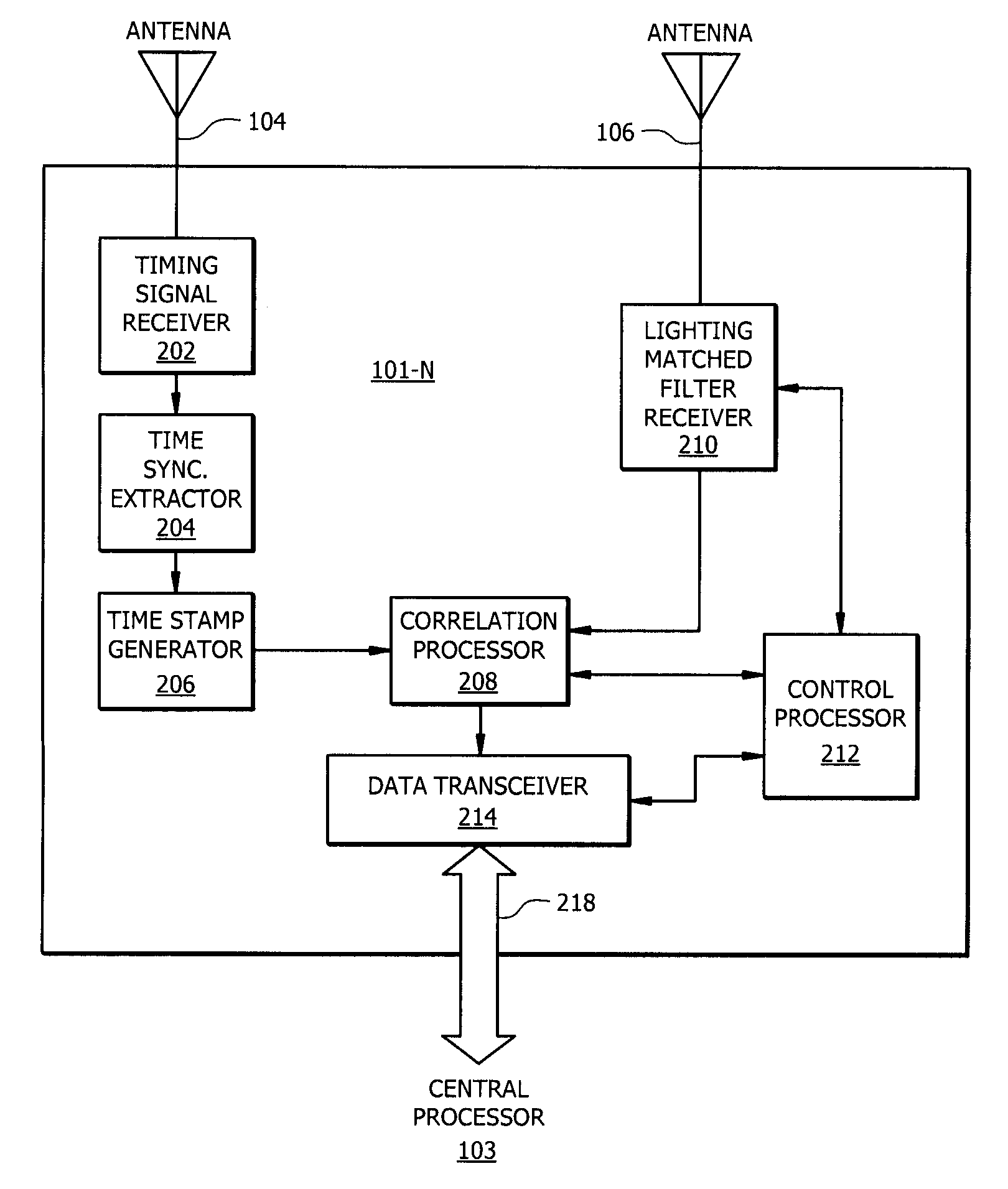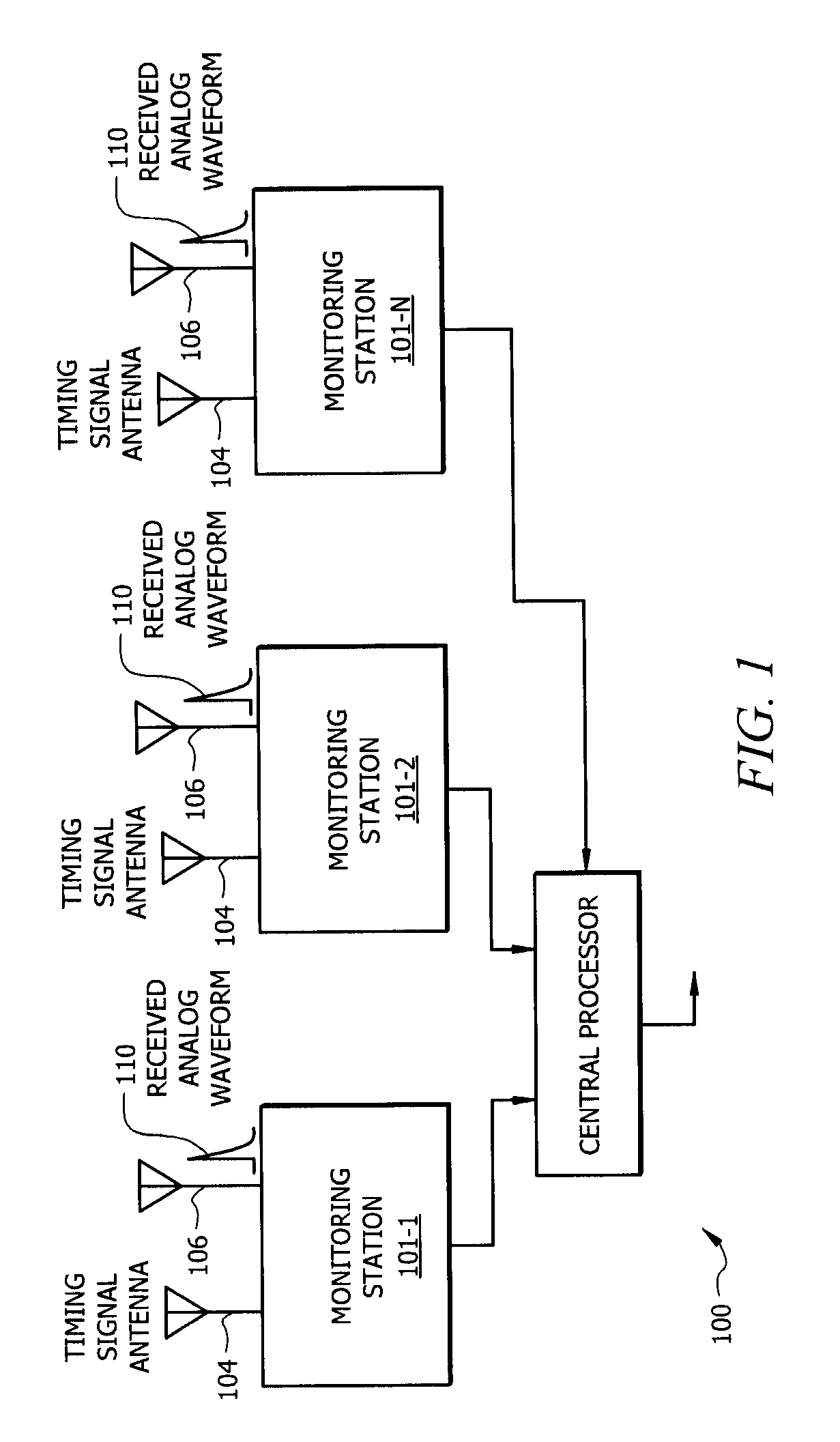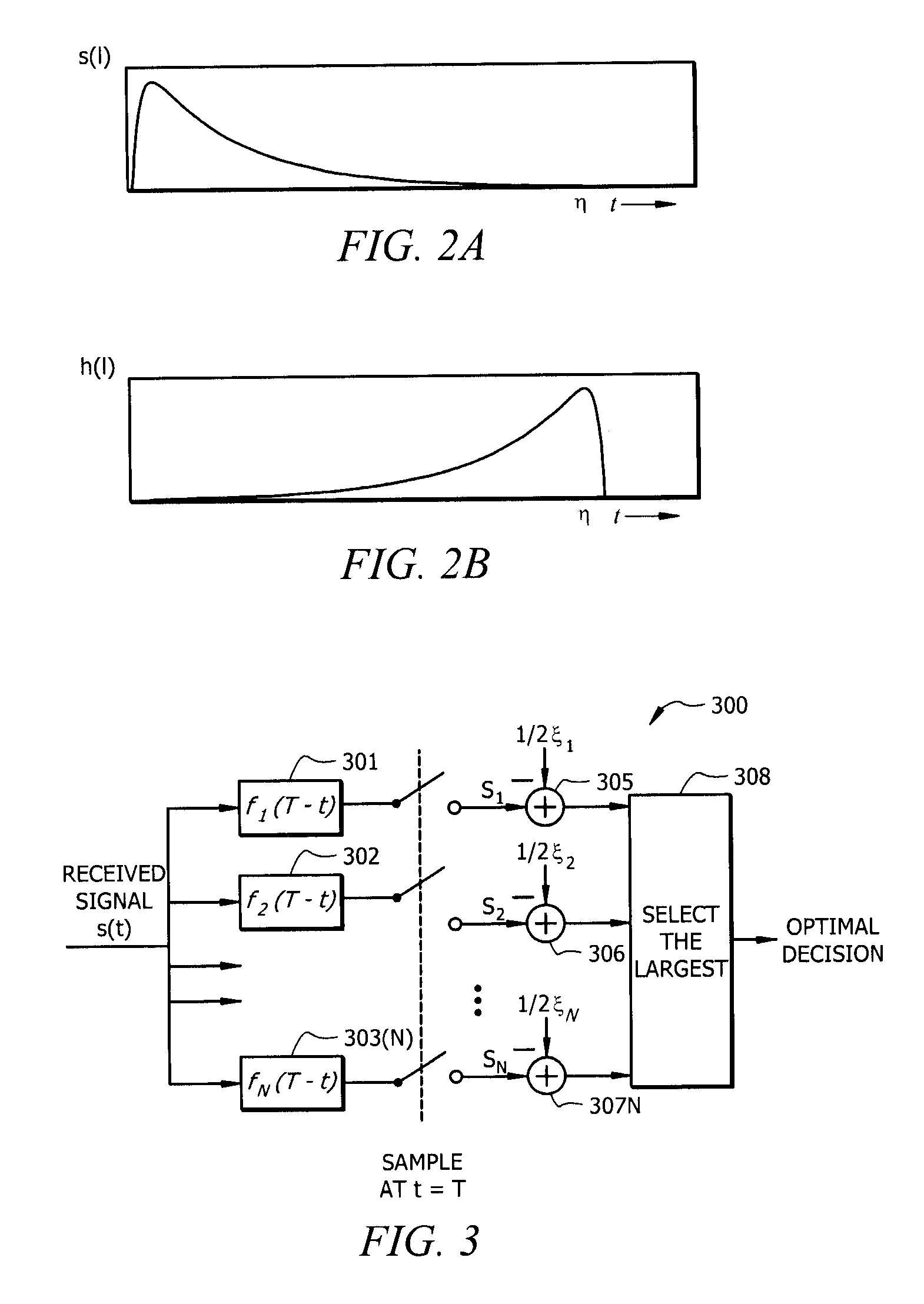Method of detecting, locating, and classifying lightning
- Summary
- Abstract
- Description
- Claims
- Application Information
AI Technical Summary
Benefits of technology
Problems solved by technology
Method used
Image
Examples
Embodiment Construction
[0060]The invention will now be described more fully with reference to the accompanying drawings, in which illustrative embodiments of the invention are shown. This invention may, however, be embodied in many different forms and should not be construed as limited to the embodiments set forth herein. For example, the present invention can be embodied as a method, a data processing system, or a computer program product. Accordingly, an embodiment of the present invention can be entirely in the form of hardware, or entirely in the form of software, or in the form of hardware in combination with software.
[0061]Referring to FIG. 1, there is shown a block diagram which conceptually illustrates the operation of a time difference of arrival (TDOA) type system 100 for locating a source of an electromagnetic signal having a particular wave form. The system includes three or more monitoring stations 101-1, 101-2, 101-N positioned at different spaced apart geographic locations. In FIG. 1 only t...
PUM
 Login to View More
Login to View More Abstract
Description
Claims
Application Information
 Login to View More
Login to View More - R&D
- Intellectual Property
- Life Sciences
- Materials
- Tech Scout
- Unparalleled Data Quality
- Higher Quality Content
- 60% Fewer Hallucinations
Browse by: Latest US Patents, China's latest patents, Technical Efficacy Thesaurus, Application Domain, Technology Topic, Popular Technical Reports.
© 2025 PatSnap. All rights reserved.Legal|Privacy policy|Modern Slavery Act Transparency Statement|Sitemap|About US| Contact US: help@patsnap.com



